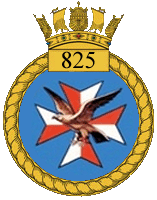Related Research Articles
Eleven ships of the Royal Navy have been named HMS Antelope, after the Antelope:
Nine ships of the Royal Navy have been named HMS Glasgow after the Scottish city of Glasgow:

Force H was a British naval formation during the Second World War. It was formed in late-June 1940, to replace French naval power in the western Mediterranean removed by the French armistice with Nazi Germany. The force occupied an odd place within the naval chain of command. Normal British practice was to have naval stations and fleets around the world, whose commanders reported to the First Sea Lord via a flag officer. Force H was based at Gibraltar but there was already a flag officer at the base, Flag Officer Commanding, North Atlantic. The commanding officer of Force H did not report to this Flag Officer but directly to the First Sea Lord, Admiral of the Fleet Sir Dudley Pound.
Five ships of the Royal Navy have been named HMS Norfolk, after the Duke of Norfolk or the county of Norfolk. The Norfolk motto is Serviens servo.
Six ships of the British Royal Navy have been named Coventry, after the city of Coventry in the West Midlands.
Nine ships of the Royal Navy have been named HMS Amazon, after the mythical female warriors.
Six ships of the Royal Navy have been named HMS Edinburgh, for the Scottish city of Edinburgh. In addition, one ship of the Royal Navy has carried the similar name HMS Duke of Edinburgh.
Six ships of the Royal Navy have been named HMS Rodney, of which at least the last five were named after the Georgian Admiral George, Lord Rodney. A seventh was planned but never completed:
Eleven ships of the British Royal Navy have been named HMS Kent, after the county of Kent and the Duke of Kent.

HMS Glasgow was a Type 42 destroyer of the Royal Navy. The last of the Batch 1 Type 42 destroyers, Glasgow was commissioned in 1979. The destroyer fought during the Falklands War, and on 12 May 1982 was damaged by a bomb from an Argentine A-4 Skyhawk. Glasgow was part of the Royal Navy’s 3rd Destroyer Squadron along with HMS York, HMS Edinburgh and HMS Liverpool. The 3rd Destroyer Squadron was based in Rosyth during the 1980s and early 1990s before being moved to Portsmouth when Rosyth Dockyard was privatised and re-purposed. The destroyer was decommissioned in 2005 and was broken up for scrap in 2009.
Eight ships of the Royal Navy have been named HMS Intrepid:
Nine ships of the British Royal Navy have been named HMSPenelope, after the faithful wife Penelope of Greek mythology.
Nine Royal Navy ships have borne the name HMS Ambuscade:
Nine ships of the Royal Navy have been named HMS Brilliant.
Twelve ships of the Royal Navy have been named HMS Active or HMS Actif, with a thirteenth announced:
Seven ships of the Royal Navy have been named HMS Arrow, after the projectile:
Nine ships of the Royal Navy have been named HMS Avenger:

The Shoreham-class sloops were a class of eight warships of the Royal Navy built in the early 1930s.

825 Naval Air Squadron is a Royal Navy Fleet Air Arm Naval Air Squadron which was re-commissioned on 10 October 2014 and currently flies the AgustaWestland Wildcat HMA2.

The second HMS Wivern, was a Modified W-class destroyer of the British Royal Navy that saw service in World War II.
References
- ↑ "MoD lifts axe on three Royal Navy patrol ships to boost UK fishery protection". Southern Daily Echo. 22 November 2018. Retrieved 15 December 2018.